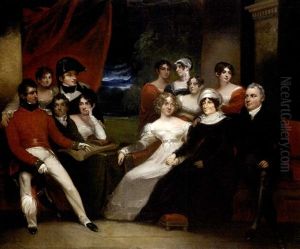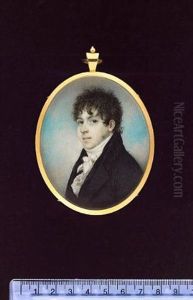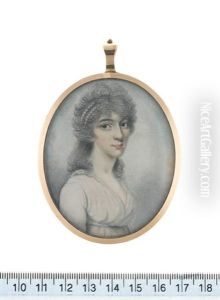William Armfield Hobday Paintings
William Armfield Hobday was an English portrait painter who was active during the late 18th and early 19th centuries. Born in 1771, Hobday developed an interest in art at a young age and pursued his passion for painting as a career. He became known for his portrait work, which was in high demand during his lifetime.
Hobday studied at the Royal Academy Schools in London, where he honed his skills and was influenced by the prevailing neoclassical style of the time. His works were characterized by their attention to detail, clarity, and the portrayal of his subjects with a certain dignity and grace that was typical of the period.
Throughout his career, Hobday exhibited his works at the Royal Academy and other prominent venues, which helped him to establish a solid reputation. He painted portraits of many notable figures of his time, including members of the aristocracy and other influential individuals. His portraits were appreciated for their likeness to the sitters and their embodiment of the subjects' character and social status.
Hobday's success as a portraitist also led him to take on students and apprentices. He contributed to the training of the next generation of artists, sharing his knowledge and techniques with them. Despite his success, Hobday's work, like that of many of his contemporaries, was eventually overshadowed by the changing tastes in art and the rise of new artistic movements.
William Armfield Hobday passed away in 1831. While he may not be as widely recognized today as some of his contemporaries, his contributions to the field of portrait painting during his time were significant, and his works still offer valuable insights into the aesthetics and social dynamics of the late Georgian era in England.
















